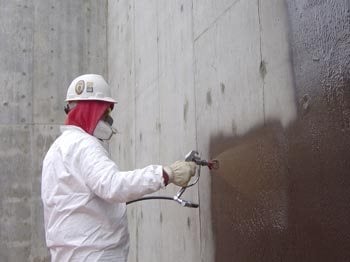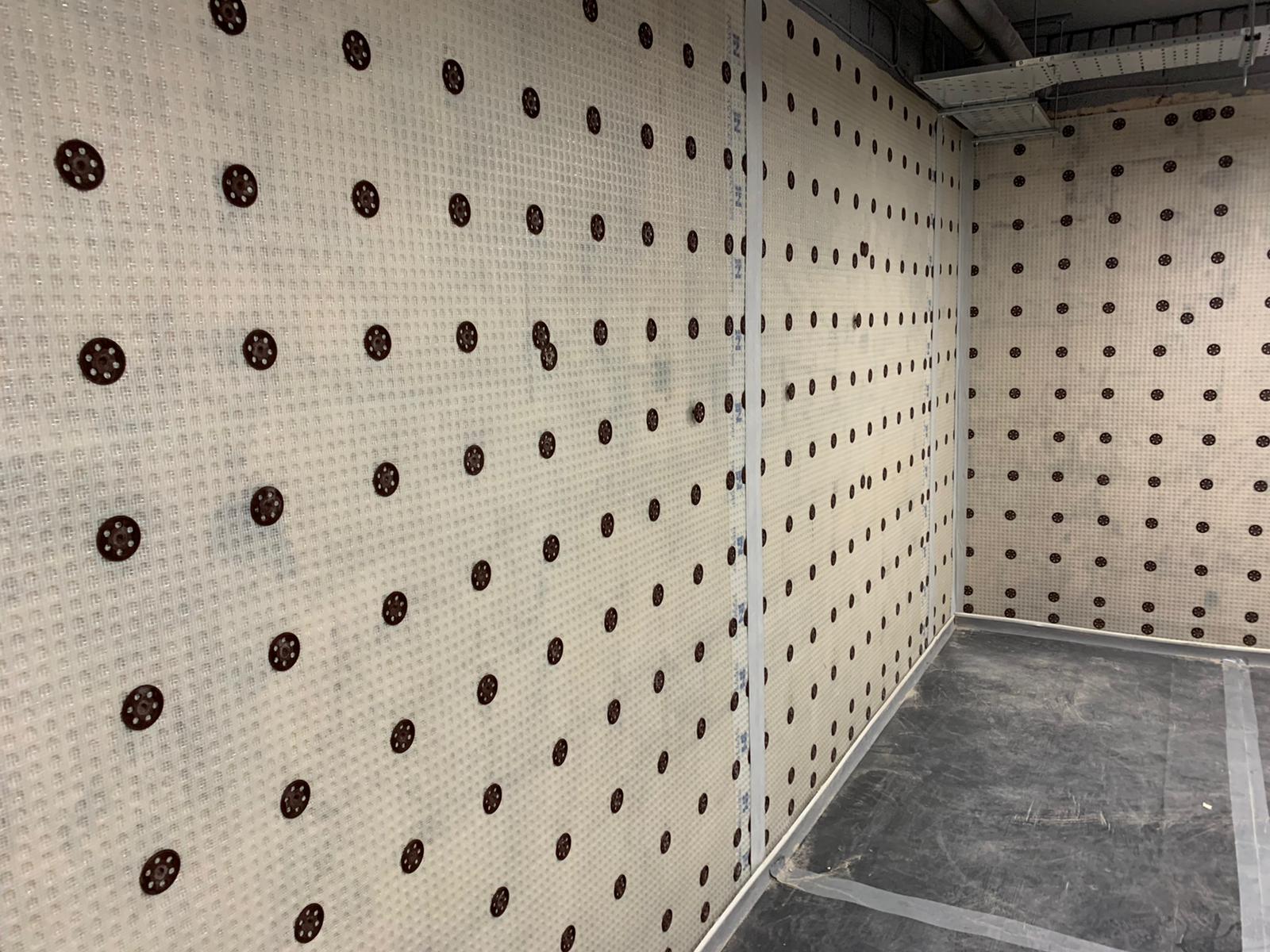Comprehending the Value of Damp Proofing in Stopping Structural Damage
Damp proofing functions as a crucial defense against dampness seepage in structures. This protective measure can avoid considerable structural damages, yet several residential or commercial property proprietors stay not aware of its importance. Acknowledging the indications of moisture and understanding the numerous options offered can be crucial. Overlooking damp proofing can lead to severe effects. What are the certain threats and solutions that home owners should take into consideration?
What Is Damp Proofing and How Does It Work?
Moist proofing works as a vital obstacle versus moisture invasion in structures. damp removal newcastle. This procedure entails applying certain products and methods to stop water from passing through walls, floorings, and various other structural components. Typically, wet proofing can be attained via the setup of moist proof membranes, finishes, or using specialized sealants.These techniques function by creating a protective layer that hinders moisture motion, making certain that the indoor atmosphere stays healthy and completely dry. Moist proofing is especially important in locations vulnerable to high humidity or groundwater, as it assists preserve the stability of the structure over time.Moreover, efficient moist proofing adds to power effectiveness by preventing warmth loss related to wet environments. By attending to prospective moisture problems before they escalate, damp proofing functions as an aggressive measure in securing structures from the detrimental effects of water damages, eventually lengthening their life expectancy and keeping their value
Typical Indicators of Moisture in a Structure
Wetness problems within a structure can materialize with a number of noticeable indicators that indicate the existence of moisture. One noticeable indicator is the look of water stains on walls or ceilings, which often suggests wetness seepage. Furthermore, bubbling or peeling paint can suggest that excess moisture is trapped underneath the surface, causing wear and tear. One more typical indication is the presence of mold and mildew and mold, which prosper in wet conditions and can often be identified by their stuffy odor. A surge in moisture levels can cause condensation on windows and other surface areas, highlighting moisture problems. Unequal or warped flooring may signify underlying moisture that endangers architectural integrity. Identifying these signs early can help alleviate possible damages and maintain a secure living atmosphere. Normal evaluations and punctual activity are important in dealing with dampness problems before they intensify.
The Risks of Neglecting Damp Proofing
Neglecting wet proofing can bring about significant dangers to a structure's architectural stability, as moisture buildup may weaken foundations and wall surfaces. Furthermore, prolonged wetness produces a setting conducive to mold and mildew growth, posturing severe wellness risks to residents. Addressing these dangers is important for making sure both security and durability of the residential or commercial property.
Architectural Integrity Threats
They subject their homes to considerable structural stability risks when home owners neglect the relevance of efficient wet proofing. Extended moisture infiltration can lead to the growth of mold and mildew, which compromises foundational components and can compromise total security. Furthermore, excess moisture can deteriorate concrete and brickwork, resulting in splits and structural failures. Timber parts are especially at risk; they can rot and shed load-bearing capability, presenting significant risks to the structure's structure. Without treatment moist problems might draw in insects, such as termites, which further worsen architectural degeneration. Eventually, ignoring damp proofing actions can bring about pricey repair work and possible safety hazards, underscoring the crucial duty of aggressive damp management in preserving the honesty of homes.
Carcinogen Issues
Just how can a relatively small oversight lead to serious health and wellness dangers? Ignoring moist proofing can produce an atmosphere for mold and mildew development, which poses substantial health and wellness dangers. Mold spores can trigger allergies, respiratory system problems, and various other wellness difficulties, particularly in prone populaces such as children, the elderly, and people with pre-existing conditions. Additionally, relentless moisture can bring in pests like rats and pests, which lug illness that further endanger health and wellness. The visibility of wetness also adds to a decline in indoor air top quality, exacerbating bronchial asthma and various other breathing conditions. The failure to address moist issues not just intimidates structural honesty yet also jeopardizes the health of owners, highlighting the important need for reliable wet proofing measures.
Various Sorts Of Damp Proofing Solutions
Although numerous factors can add to damp problems in buildings, selecting the appropriate damp proofing solution is necessary for maintaining architectural stability. A number of choices are available, each tailored to certain conditions.One typical remedy is a damp-proof membrane (DPM), normally made from polyethylene or asphalt, which is installed in walls and floorings to avoid wetness ingress. Another alternative is damp-proof programs (DPC), which are layers of water-proof product put within wall surfaces to obstruct climbing damp.Chemical damp proofing includes infusing waterproofing chemicals right into wall surfaces to create an obstacle versus moisture. Furthermore, exterior treatments such as tanking, which includes applying a water resistant layer to the exterior of foundations, can be efficient in preventing water penetration.Each solution has its benefits and is selected based on the building's certain problems, environmental conditions, and long-term maintenance factors to consider, making sure perfect security against damp-related damage.

The Cost of Damp Damage vs. Prevention
Recognizing the monetary ramifications of moist damage contrasted to avoidance highlights the relevance of proactive steps. The expenses related to moist damages can be substantial, including repair work to structural elements, mold and mildew removal, and possible health-related expenses. Property owners may encounter substantial monetary stress if considerable damages takes place, leading to increased insurance costs and lost property value.In comparison, purchasing wet proofing solutions is typically much more affordable. Initial expenditures for prevention techniques, such as setting up damp-proof membrane layers or improving drain systems, are commonly surpassed by the long-lasting savings from avoiding pricey fixings. In addition, protecting against damp issues can improve a building's general value and allure, making it a sensible financial investment. When examining the cost of wet damages versus avoidance, it becomes clear that taking proactive steps check here can secure economic rate of interests and maintain the honesty of the property gradually.
Selecting the Right Damp Proofing Technique for Your Property
Which damp proofing method is most appropriate for a certain building commonly depends on different aspects, including the building's age, existing moisture issues, and local environmental problems. For older frameworks, conventional methods such as asphalt membrane layers or cementitious coatings might be more efficient, as they can provide a robust barrier against increasing damp. In contrast, newer buildings might gain from modern remedies like infused damp-proof courses, which are much less invasive and can be tailored to particular wetness challenges.Additionally, properties in locations with high water tables or hefty rainfall might require advanced methods, such as tooth cavity wall surface drainage systems or outside waterproofing. House owners must likewise consider the specific materials made use of in their structure's construction, as some methods might not be suitable. Ultimately, an extensive evaluation by an expert can guide homeowner in choosing the most effective wet proofing approach tailored to their unique conditions.
Keeping Your Damp Proofing System With Time
Regular upkeep of a wet proofing system is crucial for ensuring its long-lasting effectiveness and shielding a home from moisture-related damage. Property owners ought to perform regular inspections to identify any type of signs of wear or compromise in the wet proofing layer. This includes checking for cracks, peeling paint, or mold growth, which might suggest moisture intrusion.Additionally, it is advisable to clean gutters and downspouts regularly to stop water accumulation around the foundation. Reapplying membranes or sealants may be required if deterioration is observed.Engaging professional services for regular analyses can additionally boost the longevity of the system. These experts can give understandings right into potential vulnerabilities and suggest timely fixings.
Regularly Asked Questions
How Much Time Does Damp Proofing Therapy Last Prior To Requiring Repair Work?
The long life of damp proofing treatment usually varies from 10 to 30 years, relying on aspects such as the approach utilized, ecological problems, and upkeep practices. Routine assessments can assist identify when fixings may be necessary.
Is Do It Yourself Damp Proofing Effective Contrasted to Professional Providers?
The effectiveness of DIY moist proofing differs significantly. mould removal newcastle. While some individuals may accomplish acceptable results, professional services generally guarantee thorough options, leveraging know-how and high quality materials to stop future concerns extra reliably than the majority of DIY attempts
Can Damp Proofing Improve Indoor Air Quality?
The question of whether damp proofing can boost indoor air quality occurs frequently. Effective wet proofing lowers dampness levels, thereby lessening mold growth and irritants, eventually adding to a much healthier indoor atmosphere for residents.
Exist Particular Regulations for Damp Proofing in Various Locations?
Rules for wet proofing vary by area, typically affected by regional building regulations and environmental problems. Compliance assurances efficient wetness control, guarding structures and promoting safety and security, which highlights the necessity for adherence to these particular policies.

What Are the Long-Term Benefits of Appropriate Damp Proofing?
The long-lasting benefits of appropriate moist proofing consist of enhanced architectural honesty, reduced upkeep prices, improved interior air quality, and boosted home value. These benefits add to a much healthier living environment and extended life expectancy of buildings. Normally, wet proofing can be achieved with the setup of wet proof membrane layers, finishes, or the use of specialized sealants.These approaches function by creating a safety layer that hinders dampness motion, ensuring that the interior environment remains completely dry and healthy and balanced. Damp proofing is specifically vital in locations vulnerable to high moisture or groundwater, as it aids keep the stability of the framework over time.Moreover, reliable wet proofing contributes to power performance by stopping heat loss associated with moist atmospheres. Neglecting moist proofing can lead to considerable threats to a structure's structural honesty, as dampness buildup might damage walls and foundations (damp proofing newcastle). Numerous aspects can contribute to damp concerns in buildings, picking the appropriate moist proofing service is important for maintaining architectural honesty. Which damp proofing approach is most suitable for a specific building usually depends on numerous aspects, including the structure's age, existing moisture issues, and local environmental problems
Comments on “Highly recommended companies for damp removal newcastle: What to look for”